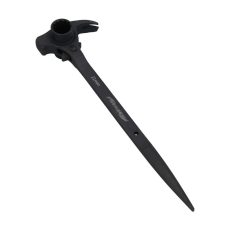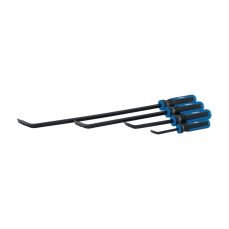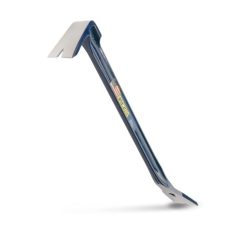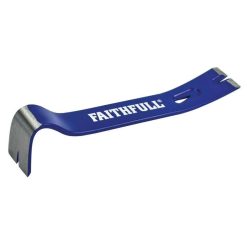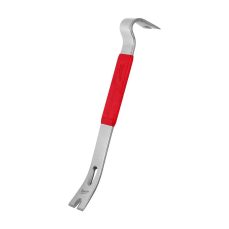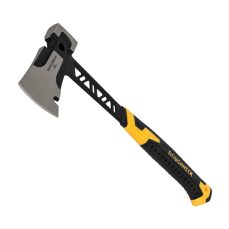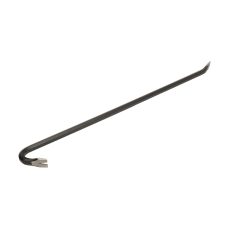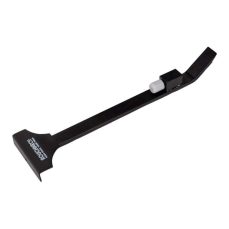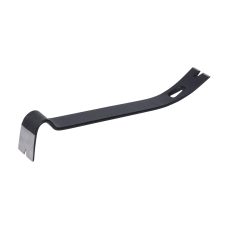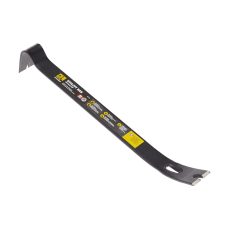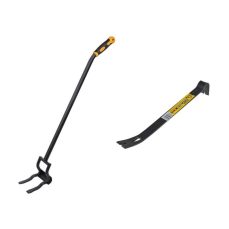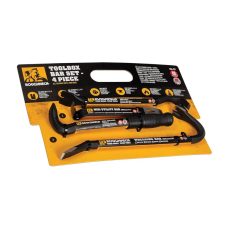Crowbars Hand Tool: Essential for Demolition and Heavy Lifting
Crowbars, also known as pry bars, are versatile hand tools used in demolition, construction, and even gardening tasks. Whether you’re tearing down walls, lifting pallets, or prying apart nails, a crowbar tool is indispensable. Available in various sizes and styles, such as the large pry bar, mini pry bar, and long crowbar, these tools offer the leverage and strength needed for tough tasks. With options like wrecking bars and flat pry bars, you can easily select the right tool for the job.
Key Features:
- Variety of Sizes: Crowbars come in different lengths and designs to suit your needs. A long pry bar or large crowbar provides maximum leverage for heavy lifting or demolition, while a small pry bar or mini crowbar fits perfectly in tight spaces and for precise tasks.
- Durable Construction: These pry bars are made from high-quality steel to withstand heavy use. The strong, heat-treated steel of a heavy-duty pry bar ensures durability and strength, making it ideal for tough jobs like breaking concrete or lifting heavy materials.
- Comfortable Grip: Many crowbars feature ergonomic handles or grips to ensure comfort and control, allowing you to use them for extended periods without hand fatigue. Whether you’re using a mini crowbar for small tasks or a long crowbar for more demanding projects, you’ll enjoy a secure and comfortable hold.
- Multiple Applications: You can use a wrecking bar or pallet pry bar for various tasks, including demolition, lifting, splitting wood, and even gardening. Pry bars excel at pulling nails, separating materials, and breaking apart objects.
- Portable & Easy to Use: Lightweight models like the mini pry bar set or small crowbar are easy to carry and perfect for confined spaces, while large pry bars suit heavy-duty jobs that require greater strength and reach.
- Pry Bar Set: A pry bar set typically includes multiple sizes, from flat pry bars to pallet pry bars, offering maximum versatility and convenience. Whether you’re working on home renovations or professional construction projects, having the right tool at hand is essential.
Benefits:
- Maximum Leverage and Power: Whether you’re prying up floorboards or removing nails, a crowbar gives you the leverage you need to get the job done quickly and efficiently. Tools like the large wrecking bar or 60-inch pry bar provide maximum force to tackle heavy-duty tasks.
- Multipurpose Tool: Pry bars are highly versatile and handle a range of situations, from demolition work to gardening. Whether you’re a professional tradesperson or a DIY enthusiast, these tools make your work easier.
- Efficient and Fast: The simplicity of a crowbar allows you to work quickly and efficiently. Tasks that would take time with other tools, such as lifting pallets or breaking apart wooden crates, become more effective with a long crowbar or wrecking bar.
- Cost-Effective: Unlike expensive power tools, a crowbar is a simple, affordable hand tool that gets the job done. It doesn’t require electricity or batteries, so it’s always ready when you need it. A pallet pry bar or mini crowbar provides years of service with minimal maintenance.
- Compact and Space-Saving: For smaller tasks, a mini pry bar or small crowbar works perfectly. These compact tools fit easily in a toolbox or tool kit, making them ideal for tight spaces or travel.
Safety Considerations:
- Wear Protective Gear: Always wear gloves and safety goggles when using pry tools, as debris may fly during heavy prying. Steel or hard plastic debris can cause injury, especially during demolition work.
- Firm Grip: Ensure you maintain a firm grip on the tool to avoid accidents. When using a heavy-duty pry bar or large crowbar, apply pressure gradually to avoid slipping.
- Proper Technique: Always use the crowbar tool in a controlled manner. Don’t apply excessive force that could cause the tool to slip or break. If prying large items, ensure the tool is placed firmly in the correct position to avoid injury.
- Inspect the Tool: Before use, always inspect your pry bar for any signs of damage. Such as cracks or bends, which could compromise its strength and effectiveness. A flat pry bar or wrecking bar tool that’s damaged could break under heavy use.
- Secure the Workpiece: When using crowbars on large items. Such as pallets or construction materials, ensure that the material is stable and won’t shift unexpectedly.

